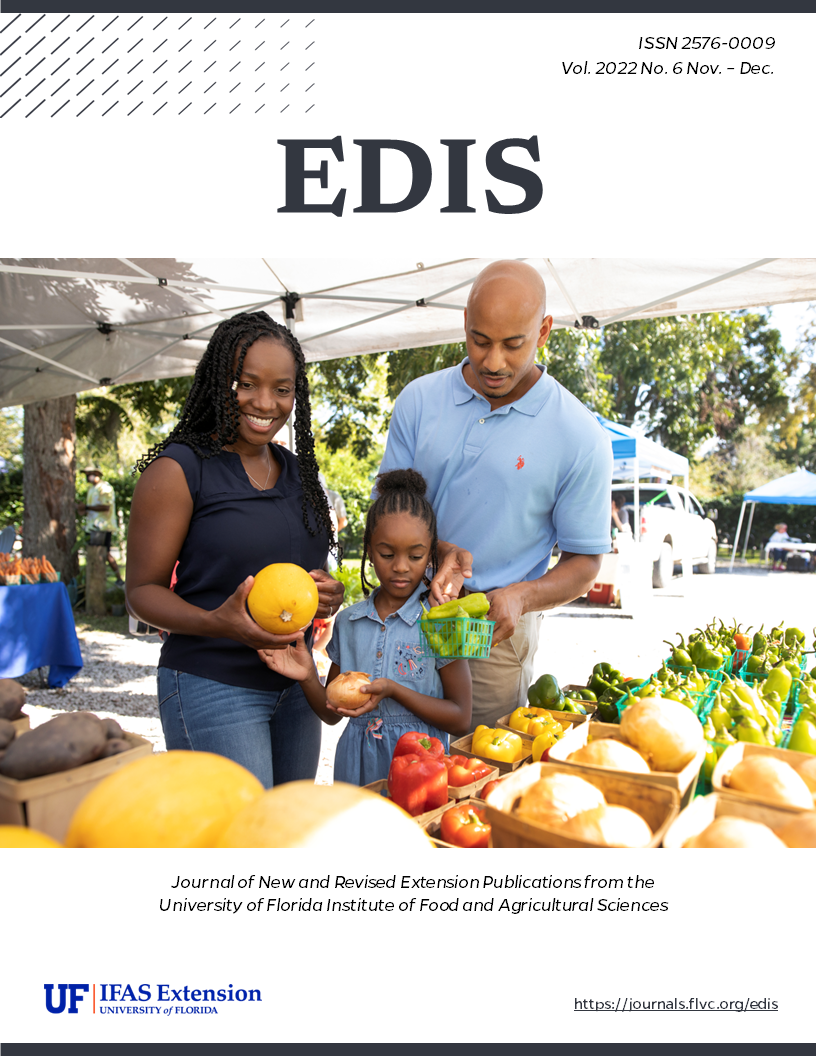Abstract
Commercial grape production requires cultivars that have high yield and quality and are also adapted to Florida's unique soils, weather, insects, and disease pressures. Other desired cultivar characteristics depend upon type of market and use. Fresh-fruit markets require a large-sized grape with high sugar content, a pleasing taste, an attractive, thin skin, and a dry scar-end that allows the grapes a minimum of one week of shelf life (https://edis.ifas.ufl.edu/HS100). Wine, juice, and jelly cultivars require consistently high yields. For muscadine cultivars to be economically viable, commercial yields should be at 6 t 8 tons/acre. Berries must have a minimum of 14º Brix at harvest and a favorable sugar to acid ratio (https://edis.ifas.ufl.edu/HS100). Color stability and the ability to maintain a good taste in the finished product are also requirements for grape juice or wine. For more information about grape production in Florida visit https://hos.ifas.ufl.edu/grape/. This article provides a general overview on the commercial fresh market, wine and juice grape cultivars to county extension agents, extension faculty, grape growers, homeowners and students who are interested in growing grapes in Florida.
Previous version:
Breman, J., and P. C. Andersen. (2009) 2018. “Commercial Fresh Market, Wine, Juice, and Jelly Grape Cultivars for Florida, [2018]: HS1152/HS401, 6/2018”. EDIS 2018 (3). https://doi.org/10.32473/edis-hs401-2008.
References
Andersen, P. C. 2017. The Bunch Grape. HS17A. Gainesville: University of Florida Institute of Food and Agricultural Sciences. https://edis.ifas.ufl.edu/mg105
Andersen P. C., A. Sarkhosh, D. Huff, J. Breman. 2020. The Muscadine Grape. HS763. Gainesville: University of Florida Institute of Food and Agricultural Sciences. https://doi.org/10.32473/edis-hs100-2020
Breman, J. W., A. Simonne, R. C. Hochmuth, L. Landrum, M. Taylor, K. Evans, C. Peavy, and D. Goode. 2007. "Quality characteristics of selected muscadine grape cultivars grown in north Florida." Proceedings of the Florida State Horticulture Society. 120: 8-10.
Cline, W. O. 2010. "2010 Southeast Regional Muscadine Grape Integrated Management Guide." https://grapes.ces.ncsu.edu/wp-content/uploads/2013/09/2010-muscadine-IMG-Draft-2feb2010-_Cline_-2.pdf?fwd=no

